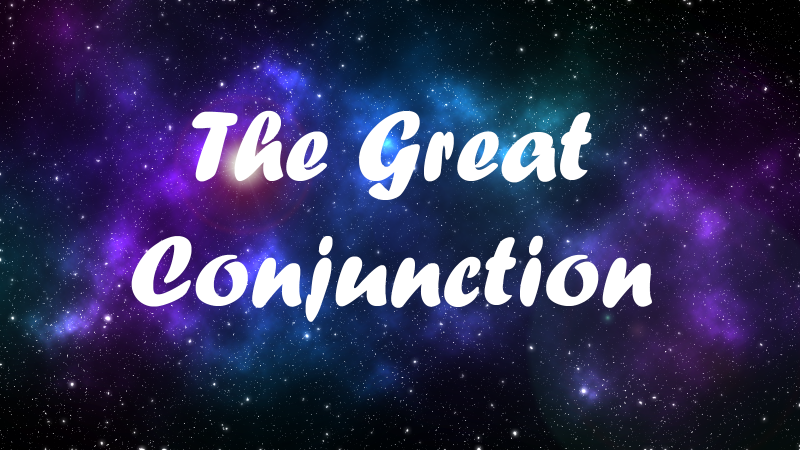This is a blog post from Scholastic Library Assistant Chelsea Fritz
On December 21st after sunset, look to the skies!
What a time to be alive! I think that’s possibly something that we have all said to ourselves this year. This year has been quite something, and it’s not over just yet. On Monday, December 21st, the universe is giving 2020 a final show in the sky, the great planetary conjunction of Saturn and Jupiter—on top of the winter solstice!
Scholastic Kid Reporter Quade Kelley explains what exactly is happening in the stars on Monday:
“Every night in December, mega planets Jupiter and Saturn will appear to be closer together. Although they are more than 400 million miles apart, on the 21st, their location in space will make them appear inseparable to the naked eye.”
“You’d have to go all the way back to just before dawn on March 4, 1226, to see a closer alignment between these objects visible in the night sky,” Rice University astronomer Patrick Hartigan told The Guardian. The two planets will not be this close again until 2080.”
1226 CE? That’s 794 years ago! While there has indeed been a conjunction of these two plants through the centuries, what makes this Monday so special is how visible this event will be. It has taken the universe almost 800 years, but we will finally be able to view this incredible celestial event.
Does this spark your interest yet? No? Check out this description from NASA:
“What makes this year’s spectacle so rare, then? It’s been nearly 400 years since the planets passed this close to each other in the sky, and nearly 800 years since the alignment of Saturn and Jupiter occurred at night, as it will for 2020, allowing nearly everyone around the world to witness this “great conjunction.”
There you have it. I will leave you with a final quote from Quade Kelly: “On December 21, about 45 minutes after sunset, look to the southwest to find the Moon. The two planets will be above it. Jupiter is already the second-brightest object in space, so together, Jupiter and Saturn will form the brightest object in the night sky.”
Happy space exploration!



